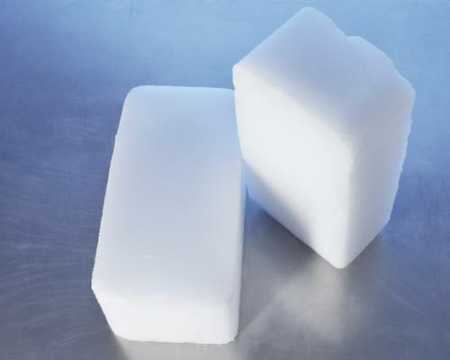
Have you ever wondered how long dry ice really lasts? Well, you’re in luck because in this article, we will explore the science behind dry ice and get to the bottom of its longevity.
Dry ice, the solid form of carbon dioxide, is extremely cold and commonly used for various purposes. Whether you need to keep your perishable items cool during a power outage or create a spooky fog effect for a Halloween party, dry ice is your go-to solution.
But how long does dry ice actually last? The answer lies in understanding its unique properties. Dry ice sublimates, which means it transitions directly from a solid to a gas without going through the liquid phase. This process makes it a fantastic cooling agent, but also means that it slowly evaporates over time.
What Is Dry Ice and How Does It Work?

Dry ice, the solid form of carbon dioxide, is extremely cold and commonly used for various purposes. Whether you need to keep your perishable items cool during a power outage or create a spooky fog effect for a Halloween party, dry ice is your go-to solution. But what exactly is dry ice and how does it work?
Dry ice is created by pressurizing and cooling carbon dioxide gas until it solidifies. Unlike regular ice, which is made from water, dry ice is -78.5 degrees Celsius (-109.3 degrees Fahrenheit) cold. This extreme cold temperature makes it an excellent cooling agent for a wide range of applications.
The Properties and Characteristics of Dry Ice
Dry ice has some unique properties and characteristics that make it ideal for many uses. Let’s take a closer look at what sets dry ice apart from other cooling agents.
One of the standout properties of dry ice is its ability to sublimate. Sublimation is the process by which a substance transitions directly from a solid to a gas without going through the liquid phase. This means that dry ice doesn’t melt like regular ice, but instead, it evaporates over time. This sublimation process is what gives dry ice its cooling power and longevity.
The Science Behind The Sublimation Process

The sublimation process of dry ice is fascinating and is rooted in the principles of thermodynamics. When dry ice is exposed to warmer temperatures, the molecules in the solid carbon dioxide gain enough energy to break free from their solid state and become a gas. This process is known as sublimation, and it occurs at a much faster rate when the temperature is higher.
The rate of sublimation can vary depending on several factors, including the temperature of the environment, the amount of dry ice present, and the surface area of the dry ice exposed to the air. The higher the temperature, the faster the sublimation process occurs, resulting in a shorter lifespan for the dry ice. However, by understanding and controlling these factors, you can maximize the longevity of your dry ice.
Factors That Affect the Longevity of Dry Ice
Several factors can influence how long dry ice lasts. Understanding these factors is crucial for ensuring that you get the most out of your dry ice. Let’s explore some of the key factors that affect the longevity of dry ice.
1. Temperature
The temperature of the environment plays a significant role in how quickly dry ice sublimates. The warmer the temperature, the faster the sublimation process occurs. For example, if you leave dry ice outside on a hot summer day, it will evaporate much more quickly than if you store it in a cool, insulated container.
To maximize the lifespan of your dry ice, it’s important to keep it in a cold environment. If possible, store it in a freezer or a well-insulated cooler. If you need to transport dry ice, consider using an insulated container or wrapping it in newspaper or other insulating materials.
2. Packaging
The way you package your dry ice can also impact its longevity. It’s essential to choose the right packaging materials to minimize heat transfer and keep the dry ice as cold as possible.
When buying dry ice, it is typically sold in bags or blocks wrapped in plastic. While this packaging is sufficient for short-term use, it may not be ideal for long-term storage. To extend the lifespan of your dry ice, consider transferring it to a well-insulated container or cooler. This will help maintain its temperature and slow down the sublimation process.
3. Storage methods
Proper storage is crucial for maximizing the lifespan of dry ice. Here are a few tips to help you store dry ice effectively:
– Store dry ice in a well-insulated container or cooler to minimize heat transfer.
– Keep the container tightly sealed to prevent warm air from entering.
– Avoid stacking heavy items on top of the dry ice, as this can cause it to crack and sublimate more quickly.
– If possible, store the dry ice in a freezer set to the lowest temperature.
How to Store Dry Ice Properly

Proper storage of dry ice is critical for maintaining its longevity. Here are some guidelines to help you store dry ice properly:
- Choose the right storage container: Select a well-insulated container, such as a cooler or an insulated bag, to store your dry ice. Make sure the container is clean and dry before placing the dry ice inside.
- Wrap the dry ice: Wrap the dry ice in several layers of newspaper or a towel. This will provide an additional layer of insulation and help slow down the sublimation process.
- Place the dry ice in the container: Carefully place the wrapped dry ice inside the container, ensuring there is enough space for air circulation. Avoid stacking heavy items on top of the dry ice, as this can cause it to crack and sublimate more quickly.
- Seal the container: Seal the container tightly to prevent warm air from entering and speeding up the sublimation process. If necessary, use duct tape or another sealing material to create an airtight seal.
- Store in a cool location: Keep the container in a cool location, such as a freezer or a cold room. Avoid placing it in direct sunlight or near heat sources, as this can cause the dry ice to sublimate more quickly.
Tips for Maximizing the Lifespan of Dry Ice
If you want to make your dry ice last even longer, here are some additional tips to consider:
- Use larger pieces: Larger pieces of dry ice tend to last longer than smaller ones. When purchasing dry ice, opt for larger blocks rather than smaller pellets or chips.
- Minimize air exposure: The more surface area of dry ice is exposed to the air, the faster it will sublimate. Whenever possible, keep the dry ice tightly wrapped or sealed to minimize air exposure.
- Pre-chill the storage container: Before placing the dry ice inside the storage container, pre-chill it by placing it in the freezer for a few minutes. This will help create a colder environment and slow down the sublimation process.
- Avoid opening the container frequently: Every time you open the container, warm air enters, causing the dry ice to sublimate more quickly. To maximize its lifespan, only open the container when necessary
Dry Ice vs. Regular Ice: a Comparison of Longevity
Dry ice and regular ice have distinct differences in terms of longevity. While regular ice melts over time, dry ice sublimates. This difference in behavior affects their respective lifespans.
Regular ice typically lasts a few hours before it completely melts, depending on the temperature and size of the ice. Dry ice, on the other hand, can last anywhere from 12 to 24 hours, or even longer, under the right conditions. Its sublimation process allows it to maintain its cooling effect for an extended period.
However, it’s important to note that dry ice is significantly colder than regular ice, making it more suitable for certain applications. For short-term cooling needs, regular ice may be sufficient, but for longer durations or when a lower temperature is required, dry ice is the better choice.
Conclusion
Dry ice is a fascinating substance with unique properties that make it an excellent cooling agent for various purposes. By understanding the science behind dry ice and the factors that affect its longevity, you can maximize its effectiveness and ensure it lasts as long as possible.
Whether you’re using dry ice for food preservation, special effects, or other applications, proper storage and handling techniques are crucial for optimal results. So the next time you find yourself in need of a cooling solution, remember the science behind dry ice and enjoy its long-lasting benefits.















